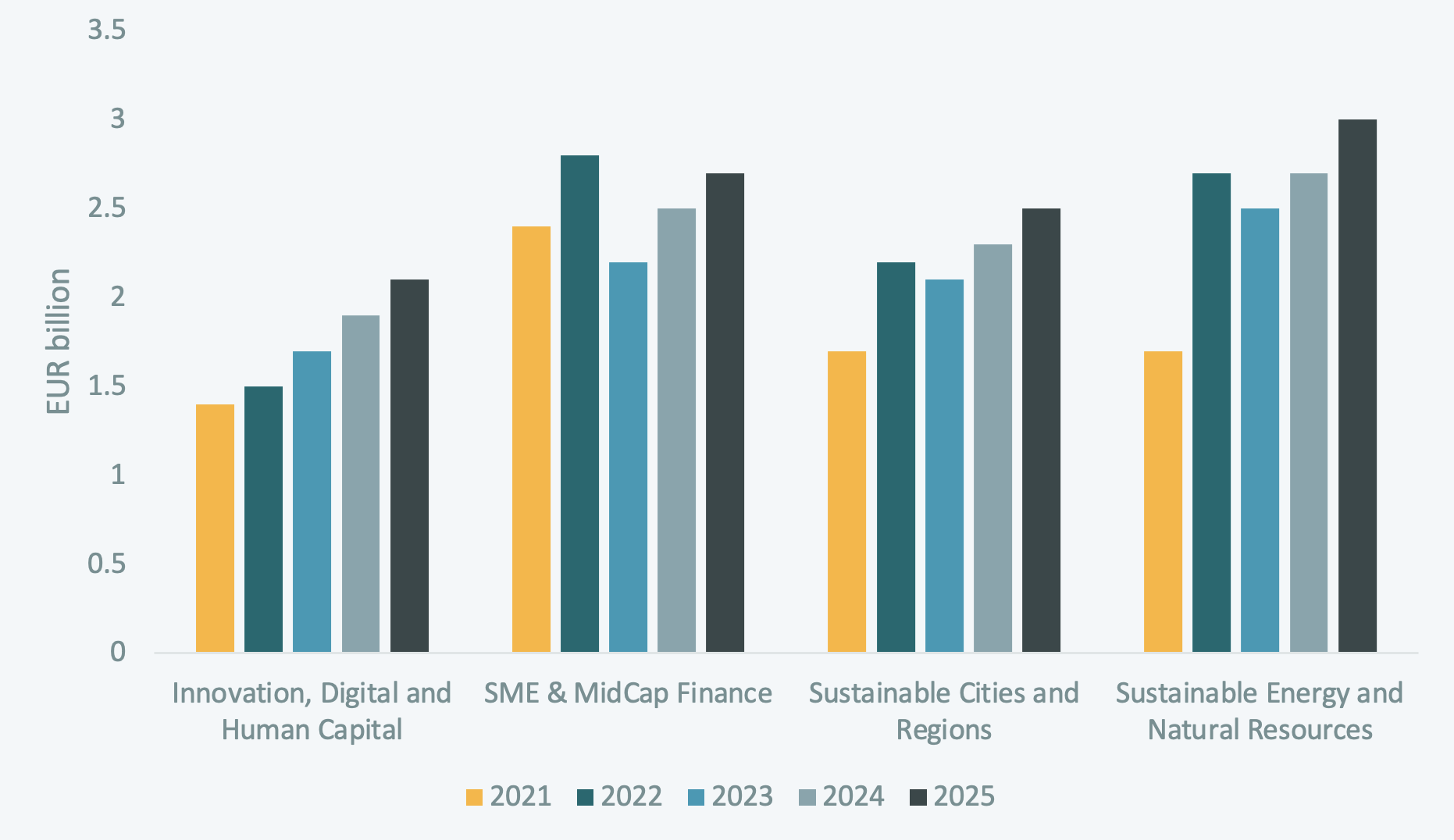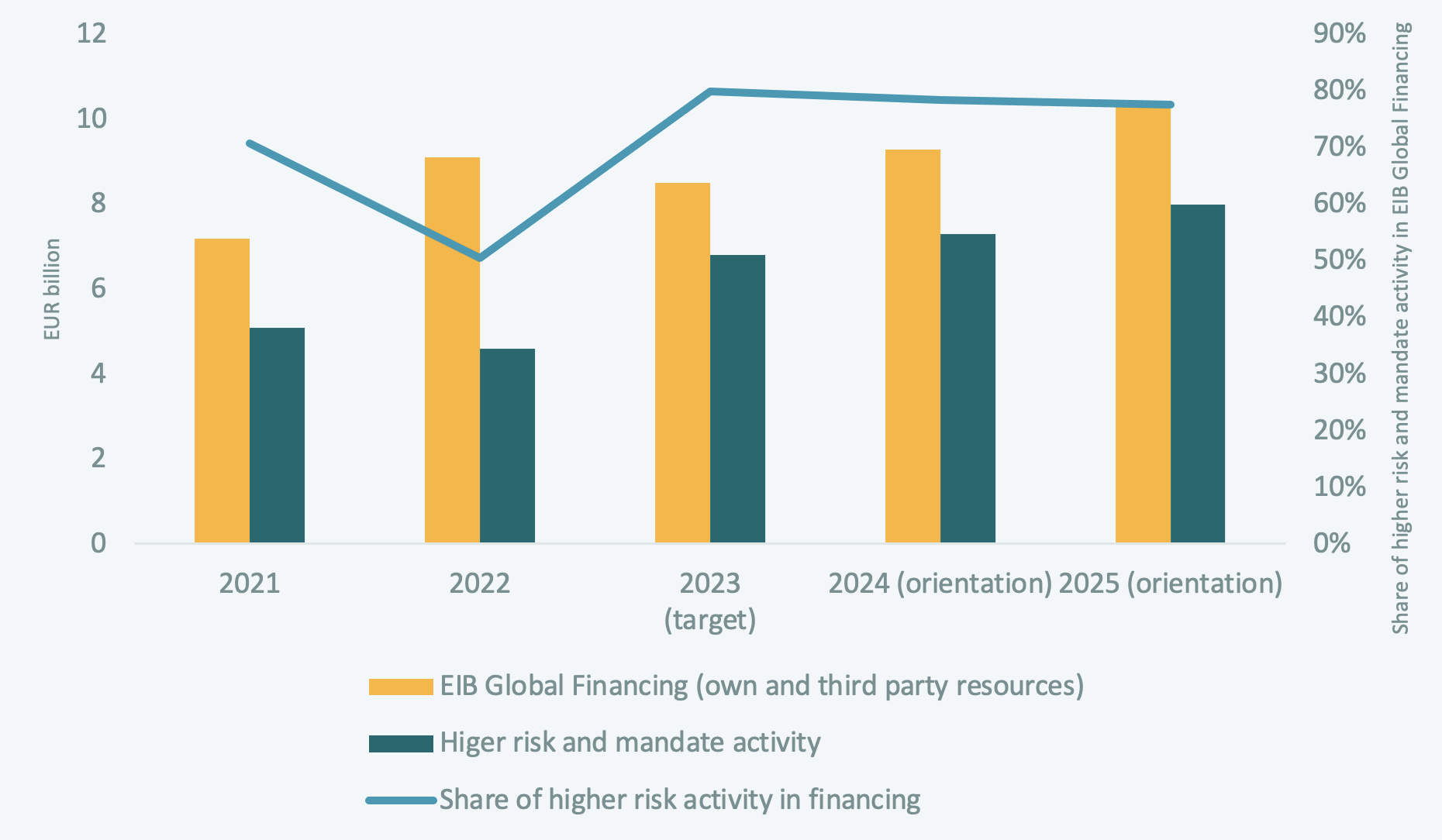Is the European Investment Bank Finally Transforming Itself Into a Development Bank?
February 14, 2023
The European Investment Bank’s (EIB) 2022 annual results and operational plans for 2023-2025 are out. The top line: EIB financing in 2022 fell from EUR93.6 billion in 2021 to EUR72.45 billion. However, EIB lending to countries outside of the European Union (EU) grew from EUR7.2 billion in 2021 to EUR 9.18 billion.
2022 has not been short of challenges for the bank, not least because of the war in Ukraine and the related and interlinked developments that have given rise to threats of economic recession in Europe and increasing pressure on national budgets, as well as the imperative to end Europe’s energy dependency on Russia. The EIB’s energy investments alone increased from EUR15.4 billion in 2021 to EUR20.9 billion in 2022.
But what do these results and forward-looking plans tell us about the future of the EIB? Is it finally metamorphosising into a development bank?
By way of background, the EIB is fully owned by the EU Members States and is one of the largest public banks in the world, with around EUR550 billion on its books. But its primary focus is on investment inside the EU. Its finance packages are associated with large public infrastructure projects. It operates in 118 countries, with its activities beyond Europe representing only around 10 percent of its portfolio, and few staff deployed outside its Luxembourg headquarters. As part of the process of reform of the European Financial Architecture for Development, which came to a head in June 2021, the EIB was criticised for its risk-averse lending approach for operations outside the EU; limited staff presence in developing countries; and lack of capacity to carry out advisory and policy dialogue, especially at country level. The conclusion on multiple fronts was that the EIB needed to improve its business and managerial practices, set a different approach to risk-taking, and increase its presence on the ground to become an effective development bank.
In response, in September 2021, the EIB announced that it would reorganise its activities outside the EU by setting up a branch for its external lending and increase its presence on the ground through regional hubs. EIB Global, the bank’s new branch was officially launched in January 2022. Yet, its strategy remains elusive, its head has yet to be appointed and it has only set up one hub in Nairobi, Kenya and another planned in Abidjan, Côte d’Ivoire.
High development impact interventions haven’t exactly been forth-coming for the bank in the year since their announcement: despite increased capital, in fact, 2022 was a particularly risk-averse year for EIB Global. On paper at least, the bank intends to increase its risk profile and become a development bank. Whether that change materialises remains to be seen.
EIB Global financing in 2022 and in the future
In 2022, EIB Global saw an increase in its financing from EUR7.2 billion in 2021 to EUR9.18 billion. Under this envelope, sub-Saharan Africa received the largest share (28 percent), closely followed by the EU southern neighborhood 27 percent (see Figure 1). In 2022, the EIB supported Ukraine with EUR1.7 billion, including EUR668 million in loans for small and medium-sized enterprises (SMEs) and for agriculture and EUR1.05 billion in loans to cover urgent financial needs and restore critical infrastructure.
Figure 1: EIB Global financing by geographic region, 2022, EUR billion

Source: EIB 2022 Activity report.
In 2022, given the difficult macroeconomic situation, EIB Global prioritised investment in small and medium-sized enterprises (SMEs), but it has also committed to increasing its investments in digital transition and human capital, with a specific focus on the health sector (see Figure 2). With energy independence from Russia and access to critical raw materials at the top of the EU’s agenda, EIB Global doubled down on investments in sustainable energy and access to natural resources in 2022, and is projecting a further increase in 2025. Whether EIB Global will U-turn on its commitment to end financing for fossil fuel energy projects from the end of 2021, given the EU scramble for alternatives to Russian oil and gas across the globe, remains a question.
Figure 2: EIB Global financing by public policy goal, 2021-2025, EUR billion

Source: EIB operational plan 2023-2025
EIB Global risk profile
The EIB has been heavily criticised for its risk-averse culture. In 2022, only half of its financing was for high-risk investments. While the annual report shows that the EIB’s own “higher risk activities”—under its own balance sheet—have surged (from EUR0.3 billion to EUR2.1 billion), its mandate activities—those backed by an EU guarantee—have plunged from EUR4.8 billion to EUR2.5 billion. With a stringent statutory risk policy, the EIB is highly dependent on the provision of guarantees by the EU to engage in high-risk lending. As the negotiations for EU guarantees under the European Fund for Sustainable Development Plus (EFSD+) are still ongoing, disbursements slowed down significantly in 2022 and will likely remain sluggish in 2023 given long approval processes. However, the bank puts forward an optimistic picture of its higher risk financing which it expects to increase to 80 percent of total funding between 2023 and 2025 (see Figure 3).
Figure 3: EIB Global financing programme and share of higher risk and mandate activity, 2020-2025

Source: EIB Operational Plan 2023-2025
Don’t hold your breath, however. There is much to do to unlock the potential for the EIB to become a development bank. And its risk approach is the key.
Learn more